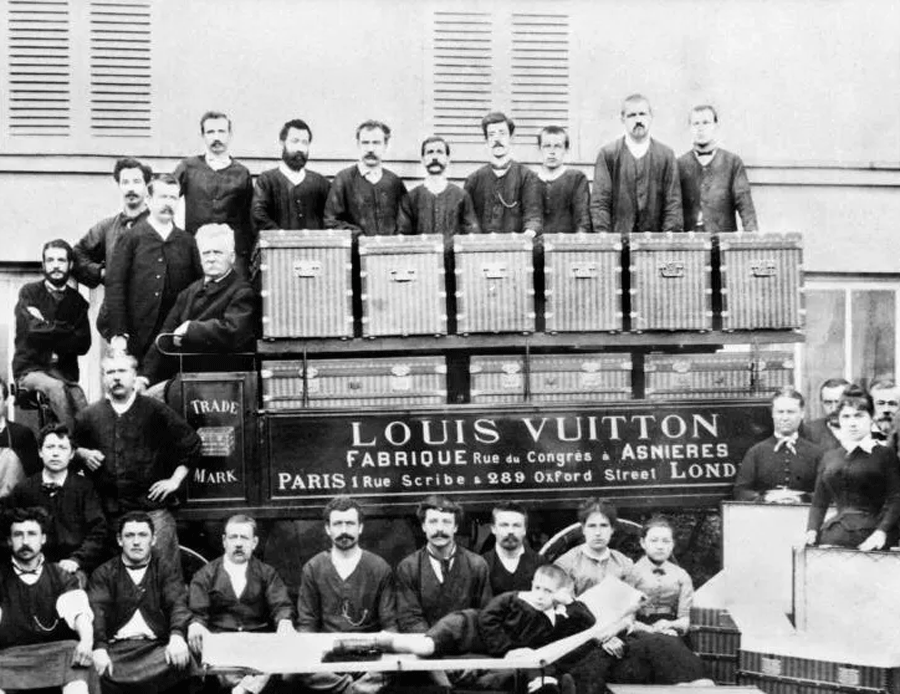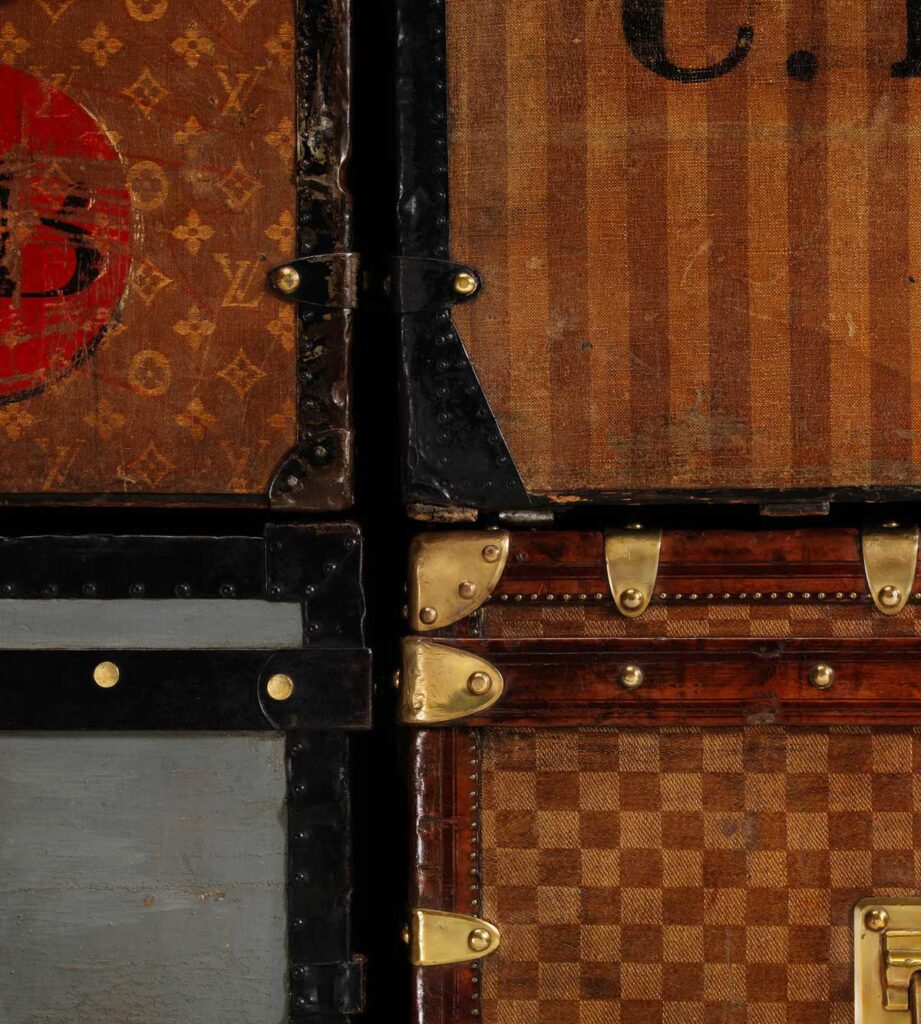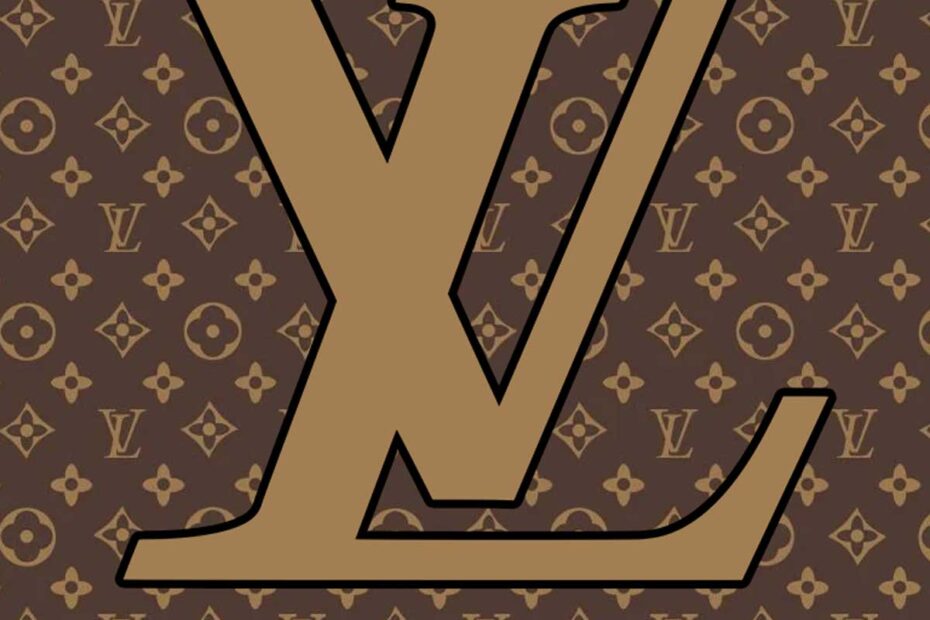In this article we are going to talk about the Louis Vuitton logo and the history behind the luxury brand
There are not many companies in the world that can boast of being on the market since the middle of the 19th century. However, the world-renowned fashion brand Louis Vuitton, founded in 1854, is one of them. Throughout the more than two and a half centuries that Louis Vuitton has been in operation, the brand has become one of the most famous and easily recognized fashion brands worldwide
While Louis Vuitton’s success over all these years is largely due to the quality and style of its ever-expanding product line, the unique and eye-catching logo that can be found on both Louis Vuitton’s clothing and marketing efforts has also played a major role in the brand’s fame
In this article, we will take a look at the long history of Louis Vuitton, the origins of its logo design, and how the Louis Vuitton logo has helped propel the brand to the top of the fashion industry.
Table of Contents
Don't miss our ultimate guide on graphic design!
Discover the best online courses, master's degrees, and university programs for a successful career in design with our "Ultimate Guide to Studying Graphic Design: The Best Options for a Successful Career". Shape your future in the creative industry today.View Post Read Later
The history of Louis Vuitton

In 1854, a Frenchman named Louis Vuitton founded a luggage company to which he gave his name. However, it wasn’t until 1858 when Vuitton designed a style of luggage that really put the brand on the map
At the time, most luggage on the market were rounded-lid trunks designed primarily to encourage water runoff. However, Louis Vuitton decided to introduce a flat-top trunk that would be easier to stack and store during travel.

For several years, Louis Vuitton sold its new brand of suitcases primarily at trade shows throughout Europe. However, in 1885, the Louis Vuitton brand opened its first store in London, England. Seven years later, in 1892, Louis Vuitton passed away and ownership of the company passed to his son, Georges Vuitton.
After his father’s death, Georges set out to turn the Louis Vuitton brand into a global enterprise. He exhibited the company’s products at the 1893 Chicago World’s Fair and, in 1896, launched the Louis Vuitton signature, the monogram canvas, and obtained the corresponding worldwide patents.
Prior to securing these patents, counterfeiting was a major problem for Louis Vuitton. However, after the company began using its patented canvas on all of its products, the problem was greatly reduced.
In 1913, Louis Vuitton opened the Louis Vuitton building in Paris. At the time, this store was the largest travel goods store in the world. Georges also opened other Louis Vuitton stores in New York, London, Alexandria, Washington, Buenos Aires and Bombay.
In 1936, Georges Vuitton died and passed ownership of the company to his son Gaston-Louis Vuitton. A few years later, when Germany invaded France at the height of World War II, the Louis Vuitton brand entered a controversial period in its history
Throughout the German occupation of France, Louis Vuitton partnered with the Germans to dramatically increase its wealth. In response to a book that was published detailing Louis Vuitton’s business dealings with Nazi Germany, a spokesperson for the brand later said,“This is ancient history. The book covered a period when it was a family business and long before it became part of LVMH. We are diverse, tolerant and everything a modern company should be.”
In any case, the Louis Vuitton brand survived the controversy and emerged from World War II more popular than ever
After the war, Louis Vuitton began incorporating leather into its product line and revamped its Monogram canvas to make it more flexible and better for use in handbags and purses. This allowed the brand to dramatically expand its product line beyond the luggage for which it was primarily known at the time.

By 1989, Louis Vuitton had a total of 130 stores worldwide, and in 1997, the brand introduced its first clothing line for men and women. Since then, Louis Vuitton has become one of the most profitable fashion brands in the world. A 2010 study by Millward Brown ranked Louis Vuitton as the 19th most valuable brand in the world and estimated its value at just over $19 billion.
Today, Louis Vuitton still holds the unfortunate title of being one of the most counterfeited brands in the world. In 2004, Louis Vuitton counterfeits accounted for 18% of counterfeit accessories seized by the European Union.
In this fight against counterfeit products in which Louis Vuitton continues to engage, the Louis Vuitton logo has played a key role. Its design and the monogram canvas on which it is located were originally intended to prevent the production of counterfeit logos. Today, however, the status symbol that the Louis Vuitton logo has become is one of the main reasons why so many fake Louis Vuitton products exist.
However, having a logo so beloved that it is copied by counterfeiters is quite a problem. The Louis Vuitton logo, a brand based on name recognition and status, has been central to the company’s success. Interestingly, the logo that Louis Vuitton initially adopted over a century ago is still the exact same design that the brand employs today.
The history of the Louis Vuitton logo

When Georges Vuitton took over the Louis Vuitton brand after his father’s death in 1892, he wanted to create a logo for the company that could be used on the new canvas he had designed and patented to differentiate Louis Vuitton luggage from the many companies that tried to copy his style.
The logo he created is a hand-drawn typeface of the letter V superimposed on the letter L and is said to have been loosely inspired by Roman fonts. In the decades since this first logo design was introduced, the Louis Vuitton logo has changed very little. There are not many brands that can say they have not changed their original logo, let alone brands that have been around for more than a century

However, the only alteration that the Louis Vuitton logo has undergone since 1892 has been the elimination of the brand name below the monogram. In 1997, designer Mark Jacobs decided to start using only the LV monogram in Louis Vuitton’s marketing activities. Apart from this subtle modification, the Louis Vuitton logo seen today is the same logo that was first designed for the company more than a hundred years ago.
Louis Vuitton logo design elements
The Louis Vuitton logo is a minimalist design that does not rely on extravagant or elaborate design elements to convey its message. If anything, the unalterable nature of the Louis Vuitton logo design is what sets it apart from other logos in the fashion industry.
The Louis Vuitton logo is a status symbol that brings incredible value to the products on which it is placed, and it is a status symbol that has not been revised once in an era when almost everything in the rest of the world has changed dramatically. Today, customers who appreciate Louis Vuitton’s history see the brand’s iconic logo as a testament to its relevance and staying power
It is a classic, unchanging design that speaks to Louis Vuitton’s long and eventful history, and proves that you don’t need an exaggerated or dramatic logo to create a design that is recognizable around the world.
The popularity of Louis Vuitton

Like most high-end fashion brands, Louis Vuitton incorporates its logo throughout its product line, and it is this logo and the status associated with it that creates the demand for Louis Vuitton products. It is also this logo that Louis Vuitton has used as a central design element in its various marketing efforts.
Originally, the Louis Vuitton logo was designed to help protect the authenticity of the brand’s products, and this is a role that the logo continues to play today. When it comes to checking if a Louis Vuitton product may be counterfeit, one of the first ways to determine if it is authentic is to inspect the Louis Vuitton logo design on the product.
If you want to create a simple yet recognizable logo design for your own brand, the Louis Vuitton logo is a good point of inspiration. Its simple yet unique design has served the brand since 1892, making it one of the most enduring logo designs still popular today
While it is true that it took a lot of work for the Louis Vuitton brand image to become the status symbol it is today, an appealing logo design was an essential starting point for the company’s goals. Anyone hoping to create a brand that achieves the elevated status that Louis Vuitton has acquired would do well to consider the value that an attractive and elegant logo design can offer.
The Louis Vuitton brand has collaborated with streetwear brands such as Supreme.


